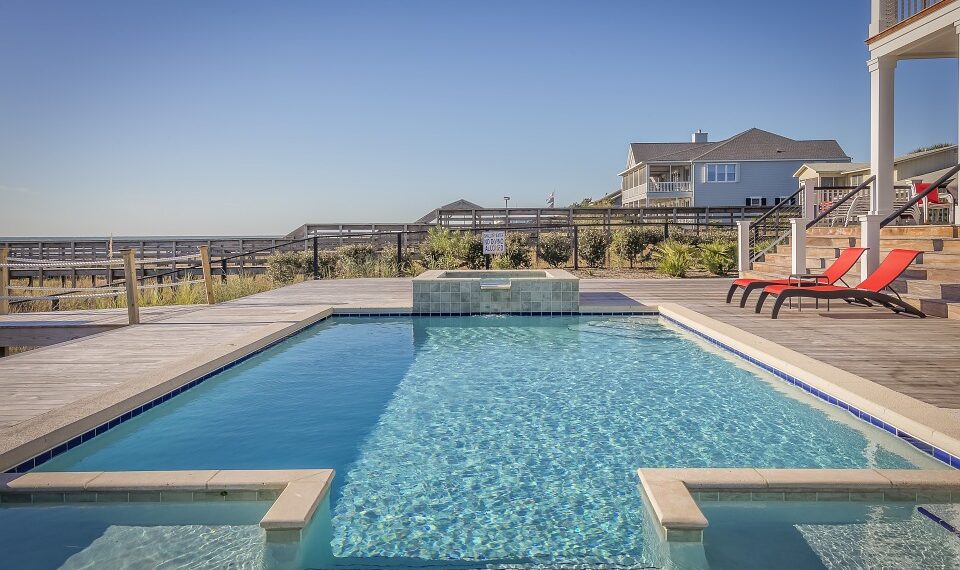Chlorine has been known to have various negative side effects. Chlorinated water irritates the eyes, causing the removal of a protective layer that normally keeps out foreign bacteria and lubricates your eyes. This leads to dryness and infection caused by the exposure to bacteria.
Chlorine gas exposure can irritate lungs, suppress the immune system, and cause respiratory disorders. It also damages plant life. When chlorine mixes with other elements in your pool such as sweat, faeces, urine, makeup, and other substances, levels of chloroform gas are released. This can impact the central nervous system, lead to jaundice, and even contribute to the development of tumours. Avoiding harsh chemicals to sanitise your pool is one of the best ways to avoid this. Here are a few ways you can clean your pool without using chlorine.
- Saltwater Pools
Saltwater pools have saltwater systems that convert salt into a form of chlorine gas which is then injected into the water to disinfect it. This regenerative process is known electrolysis, which coverts regular Sodium Chloride and transforms it into a mild saline solution. This salt sanitiser oxidises (kills) bacteria, viruses, algae and other harmful elements.
The benefit of having saltwater pools as opposed to the traditionally chlorinated pools is that they produce a gentler form of chlorine, that requires less maintenance and offers a healthier swimming environment.
However, salt is corrosive. Saltwater can wear down certain kinds of deck materials and metal-based pool equipment and nearby plant life. This could incur high costs in the long term.
- Ultraviolet (UV) Sanitation
This is a powerful disinfection method that uses short-wavelength UV light (UV-C) to disrupt the DNA of microorganisms, thus killing them. When water passes through an enclosed chamber in pool equipment, it is sanitised by powerful rays of UV light.
UV light destroys cysts, algae, viruses, bacteria, and protozoa, and even kills chlorine-resistant pathogens, such as E. Coli. The main benefit of using UV sanitation is that it requires minimal maintenance, and is proven effective for eliminating many dangerous pathogens.
- Ozonisers
Ozone, also known as O3, or “triatomic oxygen,” ozone is a powerful oxidant that destroys microorganisms. A regular molecule of oxygen contains two atoms of oxygen; ozone is created when a third is added.
The process involves a diffuser, which creates bubbles and saturates them with ozone. These ozone-saturated bubbles are then mixed with pool water in a tank. There, ozone breaks down pathogens, resulting in healthy water that is safe for swimming.
The main reason why ozone is the most widely used purification system is that ozone-treated water sparkles and feels silky soft on swimmers’ skin. It also prevents the scale of your pool’s interior and the tiles by removing calcium ad other metals like iron and manganese.
Table of Contents
Conclusion
Experts and other professionals have done a lot of research to find better ways of sanitising your pools to provide safe, healthy, cost-efficient and environmentally-friendly alternatives like using bromine, PHMB, ionisers and the ones mentioned above.

